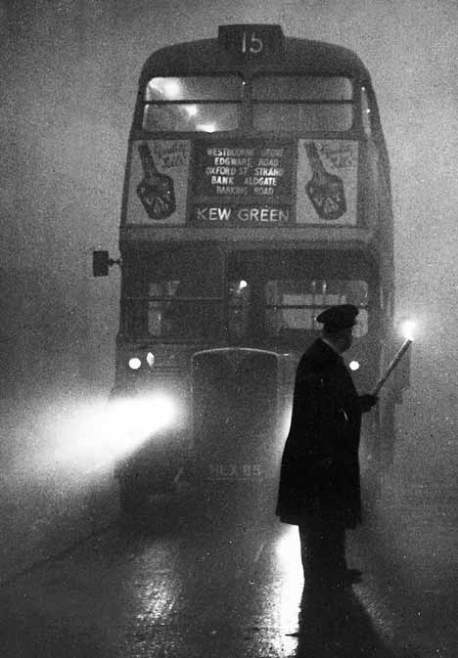61 years ago it was very easy to judge that we had a big problem with air pollution, London had been engulfed in thick smog for 4 days until the choking population finally got a chance to breathe freely again on the 9th December 1952. Left behind was a trail of destruction that saw 4,000 premature deaths as a result of the daily dose of 1,000 tonnes of smoke particles, 2,000 tonnes of carbon dioxide, 140 tonnes of hydrochloric acid, 14 tonnes of fluorine compounds and 370 tonnes of sulphur dioxide which converted into 800 tonnes of sulphuric acid. As well as the human toll, the transport system had ground to a halt and even Sadlers Wells had to suspend a performance of Le Traviata when someone left the back door open and the stage disappeared in a thick smog. The reaction of the government of the time was for Prime Minister Harold Macmillan to reject calls for legislation by saying that there were; “an enormous number of broad economic considerations that have to be taken into account.”
Problems of poor air quality were first documented back in 1257 when Henry III’s queen Eleanor was forced to cut short a visit to Nottingham because of fumes from burning coal. Fast forward 756 years and the fuel may be different but the concerns are still as acute. Despite Mr Macmillan’s initial lack of action in the 1950’s pressure did finally result in the arrival of a major piece of Public Health legislation the Clean Air Act 1956. Within a decade the skies were clear again but just because you couldn’t see the problem anymore didn’t mean it had gone away. Like Queen Eleanor’s experience we just swapped one issue for another. At the start of the twentieth century there were only 8,000 cars in Britain by 1999 there were 21 million add to that the increasing motorway network, the reduction in rail travel brought about by the Beeching Report in 1963 and its not hard to see a crisis looming. Unlike 1952 or 1257 we can generally go about our lives without sensing the seriousness of the problem. Quite how large that problem is still creates much debate.
A recent report from scientists in Holland has suggested that levels of particulates well below current European standards are still harmful. If that is the case the 29,000 deaths already attributable to poor air quality may well be a massive underestimate.
So why the general apathy towards a subject that ranks alongside obesity and alcohol as one of the major Public Health issues of our time? Its a tough question to answer, mention air quality to members of the public and its high up the list but within Local Authorities it doesn’t seem to get the backing it deserves. Perhaps part of the reason for that is the technical nature of the subject and the fact that current policies have failed to join air quality with Public Health. For many years I asked colleagues about the health profile of their Air Quality Management Areas to be greeted with blank looks. It surely should be a fundamental part of the process to ensure those with the poorest health and protected as far as possible from areas with the poorest air quality. Another issue which harps back to Harold Macmillan’s feelings on the matter in 1953 is economics with Local Authorities seeing budgets disappear stopping continuos monitoring is seen as a quick win to boost the budget. Again a lack of joined up thinking means many Directors of Public Health are likely to be unaware of decisions made by their own authorities. As we look back over 61 years its difficult not to think that in real terms we’ve made very little progress as there is still most definitely something in the air.


